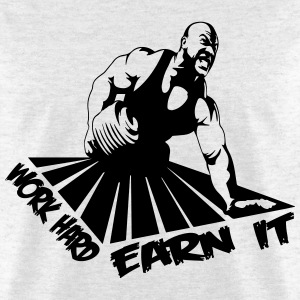Recently, I was contacted by another strength and conditioning coach specializing in youth athletes – Stephen Walsh. We then entered into a very useful discussion regarding when and how to progress individual exercises within S&C programs for young athletes. I thought this scenario is probably not isolated to only the two of us and may warrant further discussion!
Progressive overload is one of the key principles of strength and conditioning programmes, both for senior athletes, as well as young athletes. Within this rather broad terms, we find many variables which can be manipulated – number of repetitions, number of sets, recovery period and intensity. These variables are usually covered in depth within numerous text books and research articles. An additional variable under the term “progressive overload” which isn’t often discussed is progressing the exercise variable itself… Within the scenario of youth S&C programs, this is a key variable, so just how do we decide when to progress an exercise?
- Begin with the end in mind

Failing to plan, is planning to fail. I’ve written previously about how I aim to equip athletes with a toolbox of skills. However, in order to do this effectively, this process has to be reverse engineered. We need to know the what the desired end result is, in order to plan backwards to appropriate and effective regressions to the current athlete and state. For example, in planning single leg strength exercises I use the following continuum:
Static lunge on the spot – forward lunge on the spot – walking lunge – split squat – weighted split squat.
Whilst the weighted split squat is my desired end result and may take many cycles of training to achieve, it guides the current selection of exercises, as well as future progressions/regressions.
2. Keep the main thing, the main thing

You don’t have to look far in the world of sport and fitness to find a lot of circus tricks which have replaced traditional, proven exercises. It’s easy to get sucked down a rabbit hole of “inventive” ways of reinventing the wheel. But generally it isn’t necessary, but comes as a result of losing focus on what was the initial priority. For example, an initial starting point for building leg strength may be a bodyweight or goblet squat. This may be progressed by gradually increasing the resistance in the form of a dumbbell or kettlebell.
Following with this school of thought, you may continue to progress the load until the load of the dumbbell or kettlebell is too high to be adequately held by the upper body. At this point, we’ve lost the aim of building leg strength or squat technique and are now limited by upper body strength. This would be a suitable time to progress onto another variation for building leg strength (eg. backsquat, front squat, deadlift, hex bar deadlift and even single leg variations). If we keep goblet squatting, we’ve lost sight of the main thing – building leg strength. It’s time to progress to another tool which serves our main purpose – building leg strength. Another great example is pressups. Thanks to youtube, there are now a million ways to do a press up – but eventually you want to move onto another horizontal pushing variation (benchpress, dumbbell chest press etc.)
3. Earn it.

Don’t progress an exercise just for the sake of it. Make the athlete earn the progression through achieving sound technique, building an adequate work capacity and showing stable technique under fatigue (eg. in the final set). Remember that this is not always linear in youth athletes (eg. adolescent awkwardness). Often athletes may have made progress before reverting to poor movement later in development. This may often require regressions rather than progressions until the stable technique is achieved again. This means mastering the basic fundamental movement patterns before moving onto the sexy stuff:
- Jump/land
- Upper body push
- Upper body pull
- Squat
- Hinge
- Lunge
- Brace
These should be the cornerstones of the beginner S&C program. Most of the time, we have limited contact time with our athletes. As such, we should prioritise our “main things” within our programs. As I’ve mentioned previously, utilizing the warm up time can help here.
4. Rome wasn’t built in a day.

Don’t rush. Softly, softly catchy monkey. A firm foundation takes time to build. This is where your skill at communication and building buy-in with your athletes is key. A good coach-athlete relationship is built on trust. It’s key that our athletes understand that good movement patterns, adequate strength levels and mobility are key to preventing injury, as well as improving performance. Cutting corners may lead to injury risk and under-performance…
So that’s it! These are the principles that I try to adhere to in my coaching and programming of young athletes and I hope these will be helpful to you too.
Are you a youth sport coach or PE teacher who wants to improve the athleticism of your athletes? Check out our Fundamental series programs here.
For more great content, please check us out on Facebook. Also, if you are interested in discussing things like this with like minded coaches then please visit the Youth Strength and Conditioning Coaches Facebook group.

One thought on “4 principles for planning progression…”
Comments are closed.